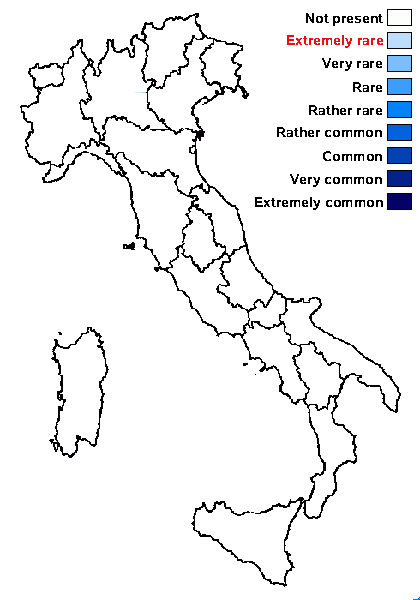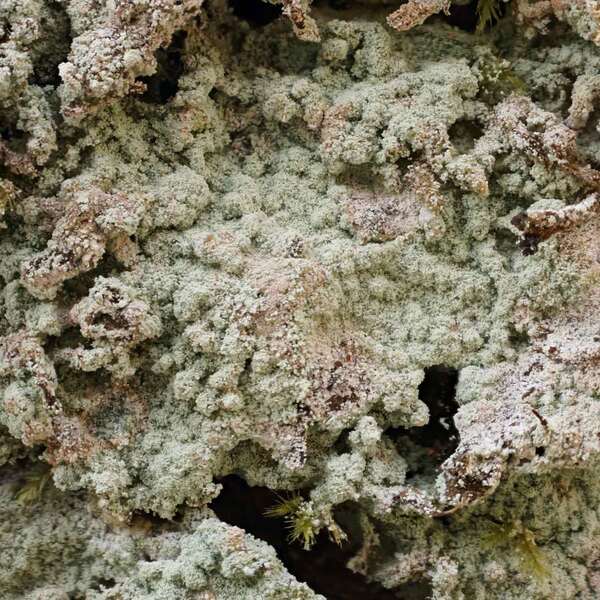Lepraria sylvicola Orange
in Slavíková-Bayerová & Orange, Lichenologist, 38: 507, 2006
Synonyms:
Distribution:
Description: Thallus leprose, diffuse, poorly delimited, bluish white to pale blue-grey, with a powdery appearance, the granules soredia-like, (24-)40-160 µm in diam. Medulla absent. Subthalline hyphae usually sparse, white to pale orange-brown, the pigmented ones K+ purple red. Spot tests: Thallus K+ pale yellow, C-, KC-, P-, UV-; subthalline hyphae K+ purple red. Chemistry: roccellic and toensbergianic acids, atranorin (all major); subthalline hyphae with anthraquinones.Note: this recently-described species appears to be fairly common in Western Europe, but it has recently been found also in the Eastern Alps (Austria); it mostly occurs on the bark of broad-leaved, more rarely coniferous trees, more rarely on siliceous rocks, on surfaces which are more or less sheltered from rain. To be looked for in Italy.
Growth form: Leprose
Substrata: bark and rocks
Photobiont: green algae other than Trentepohlia
Reproductive strategy: mainly asexual, by soredia, or soredia-like structures (e.g. blastidia)
Most common in areas with a humid-warm climate (e.g. most of Tyrrenian Italy)
In underhangs rarely wetted by rain

Predictive model
Growth form: Leprose
Substrata: bark and rocks
Photobiont: green algae other than Trentepohlia
Reproductive strategy: mainly asexual, by soredia, or soredia-like structures (e.g. blastidia)
Most common in areas with a humid-warm climate (e.g. most of Tyrrenian Italy)
In underhangs rarely wetted by rain

Predictive model
 Index Fungorum
Index Fungorum
 GBIF
GBIF


